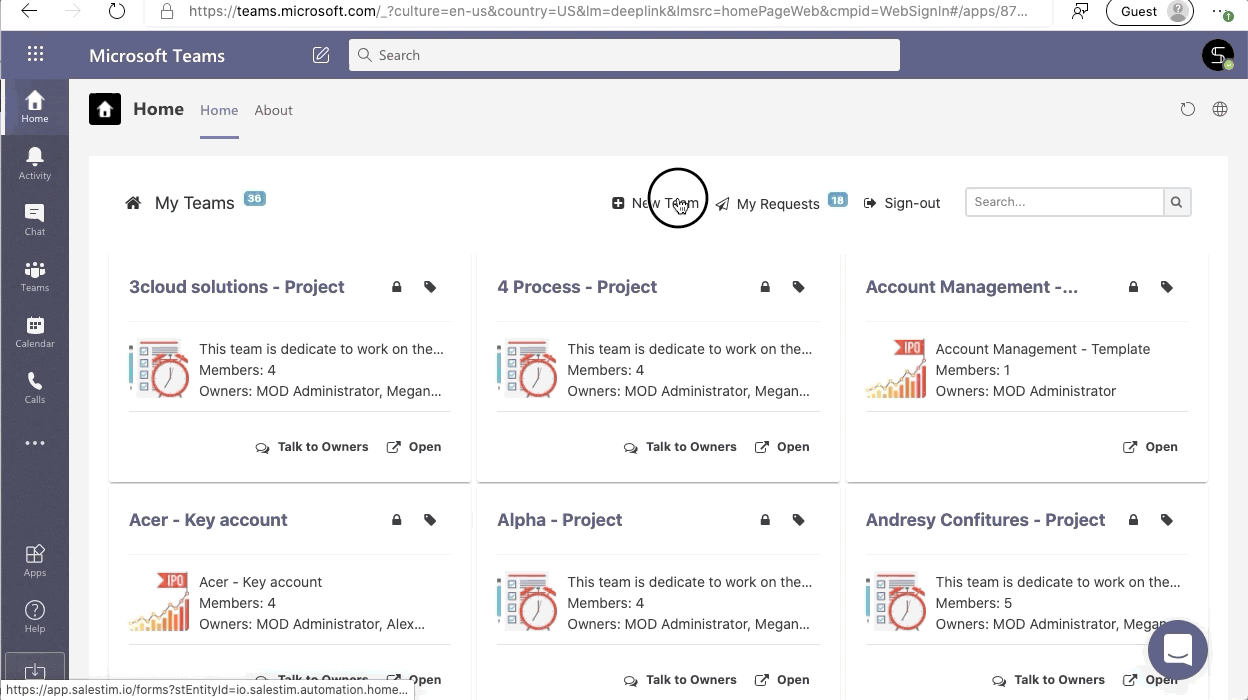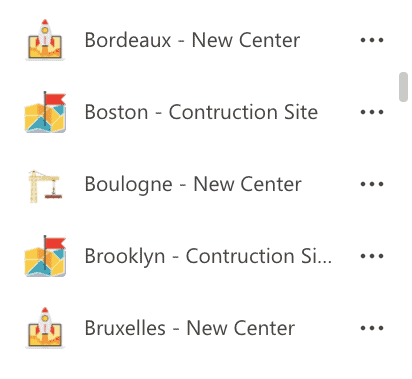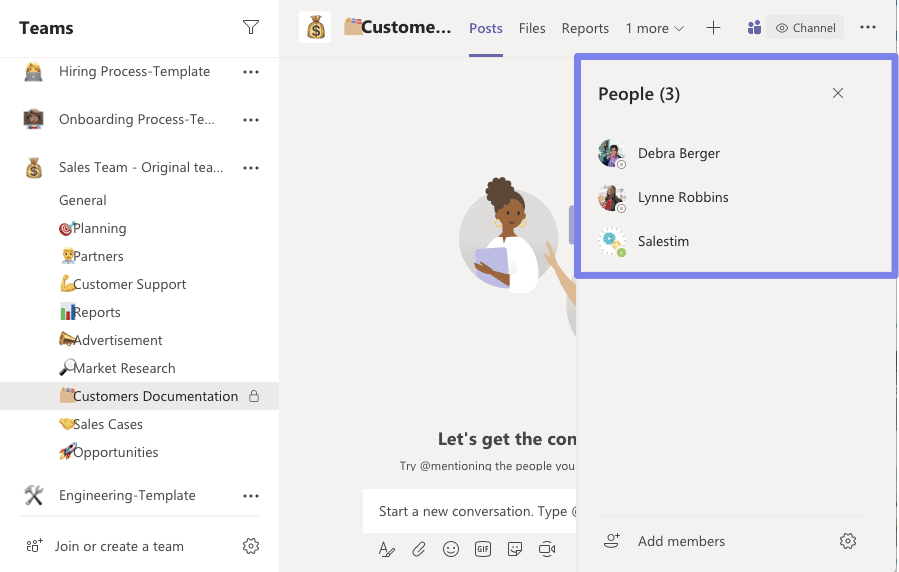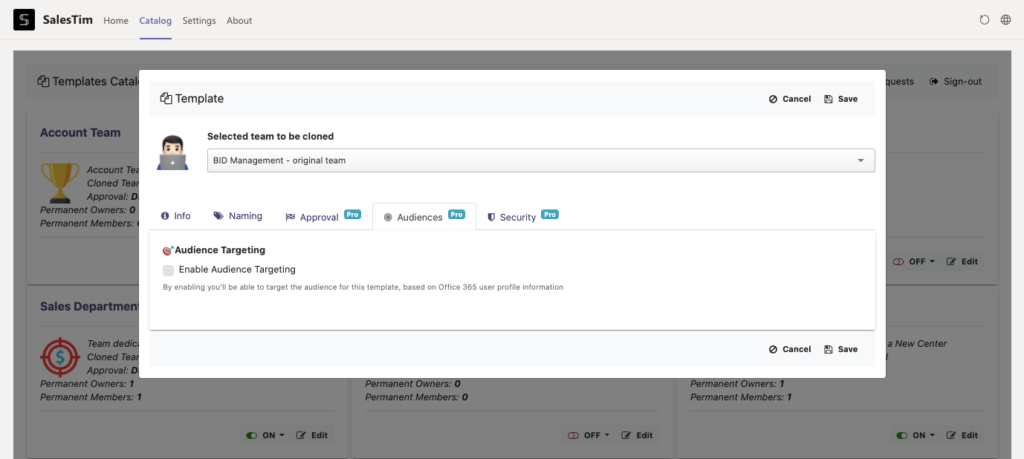Yes, I know… Microsoft Teams is a fantastic tool that will really improve your company’s productivity, and best of all, it’s included in your Office 365 subscriptions. It allows you to work together in one structured environment. You create teams depending on your organizational structure, – new projects or many other scenarios as you’ll find here in the list of 30+ Teams Collaboration Use Cases. But maybe you’re struggling with Microsoft Teams Governance?
Here at SalesTim, we also know that you struggle to find the right balance between an attractive “self-service” model, and a reassuring “managed-service” model:
- Too much freedom and as an IT Pro, you know that it will soon be the wild west, with a lot of mess in your Teams environment…
- Too tight control and you take the risk to slow-down or even kill adoption, facing the consequences with your business sponsors…
Therefore without an off-the-shelf solution, you probably locked-down teams creation for end-users, forcing them to request it through your helpdesk platform… and of course, you’re probably starting to consider to add some kind of automation through PowerShell or Microsoft Power Automate to mitigate this rigid process 😉
That’s exactly why we’ve designed SalesTim Automation!
There is another Microsoft Teams Governance model possible. With this model, you set Governance Policies not at the organizational level, but at the business context level. Because each business context requires a different level of governance.
At a glance
SalesTim Automation lets organizations improving collaborative processes at scale by automating teams provisioning, management & lifecycle through an easy to use Teams app and a corporate catalog of teams Templates.
With SalesTim Automation, you can implement an extensible Microsoft Teams governance strategy that:
- empowers your users
- is easy to maintain
- scales as your Teams usage grows
Your own corporate service catalog for Microsoft Teams
Empower end-users with self-service Teams provisioning, management, and lifecycle operations. Transcend rigid provisioning or security solutions with user-driven teams templates from your own corporate catalog, for instance:
- Marketing Campaign
- Internal Communication Project
- Project Management
- Sales Management
- Call for Tender
- R&D Project
- IT Project
- A complete list of 30+ Use Cases
Easy!
Accessible right from their personal Teams apps, your business users can request the creation of a new team, it’s easy as 1-2-3:
1. Click on create a +new team.
2. Choose the needed Template according to your needs right in a Template Catalog

3. Choose the Team Name, Description, Welcome message, and add Owners and Members.

Yes, they don’t even need to have permission to create a group or a team!
Once submitted (or once approved if you’ve enabled an approval process), the new team is automatically provisioned with all the features coming from your template:
- Channels
- Owners and members
- Apps and Tabs (Including Websites, Planner tasks…)

Governance & Security Automation
In addition to these business oriented features, SalesTim Automation templates have associated IT policies, to enforce your governance rules. Here are the features that you can use during the Template creation to empower your Microsoft Teams Governance Policies.
Team Naming Convention

With Azure AD Attributes and fixed prefix and suffix, you can set up a strong naming convention to automatically structure your workspace and avoid duplication. Explore different scenarios and set up the naming convention according to your needs.
It’s so easy! Just add the rules during the new Template creation, and it will be automatically added to a newly created team as a prefix or suffix when someone in your organization will use your Template.
- Fixed suffix/prefix with name of department, project, business solution and more
- Dynamic Naming Convention depending on your user’s Data, such as location, preferred language, user’s email domain…
- Rules with forbidden words and much more

Let’s take some example for Teams Name:
- Project Team Template: should be called “Name of the project – Project” or “Name of the project – user department – Project”
- Construction Site Team Template: “Name of the project – New location” or even add to Team Description the main goals and planned finish date of a project
Explore more examples in our Help Center
Approval Workflow for Microsoft Teams Templates
Enable additional approval workflow to delegate requests validation to your department’s business users. Thus, you will get notification each time someone creates a team from your template.

Microsoft Teams Private Channels Governance
For sure, Private Channels is an excellent feature for Microsoft Teams Users. With careful usage, it’s a powerful tool to protect your highly-secured information. However, you can face some challenges, such as:
- Uncontrolled Private Channels Creation
- Additional work for Team Owners
- The load for your IT Department

Enforce Microsoft Teams Governance with Private Channels creation control. Just add the Private Channels to your Template and everything will be copied to the newly created team with needed settings, files, and tabs with apps. Here are some common use cases:
- Microsoft Teams Templates with copied Private Channels
- Private Channels creation off by default with no possibility to collaborate through Private Channels in the newly created teams from your template
- Permanent Private Channels Owners. They will be automatically added to the newly created team to manage communication
Learn more about the Private Channels features and challenges in our blog.
Targeting Audience for Microsoft Teams Governance
Limit the usage of your template depending on the user’s data such as location, spoken language, email domain, and more. As a result, you get limited and structured teams according to your needs.

Explore some examples with different targeting rules:
- User is from France/ Outside of Germany
- English Speaker from any Country
- French or Belgium users from the Marketing Department
- Domain-based targeting and much more…
Permanent Membership / Ownership
During the Template creation, you choose what users will be added automatically to newly created teams. You can define permanent owners or members to perform the right team management and avoid performing manual tasks.

When Permanent Owners and Permanent Members are defined at the template level they will be added in the teams created as the last step of the provisioning. One important point here is that if the template includes Private Channels, Permanent Owners are added as Private Channels Owners by default when the team is created.
Learn more about Microsoft Teams Governance and Permanent Membership
Microsoft Teams Governance – Security Policies
Determine whether new teams created from your template should be private by default. As a result, only owners of these teams will be able to add members.
In a different scenario you can choose whether the requester is automatically added as a team owner or only as a member.

Learn more about Security Policies and Microsoft Teams Governance
Work smarter by packaging repetitive tasks into services!
Be up and running in minutes!
SalesTim Automation is a SaaS application, 100% hosted in Microsoft Azure. No install, no servers, nada. Updates automatically so you’ll always support the latest Microsoft Teams features.
Forget PowerShell and complex Microsoft Flows that your IT department would have to maintain to keep up with the fast-paced Microsoft release lifecycle!
Learn more about SalesTim Automation

